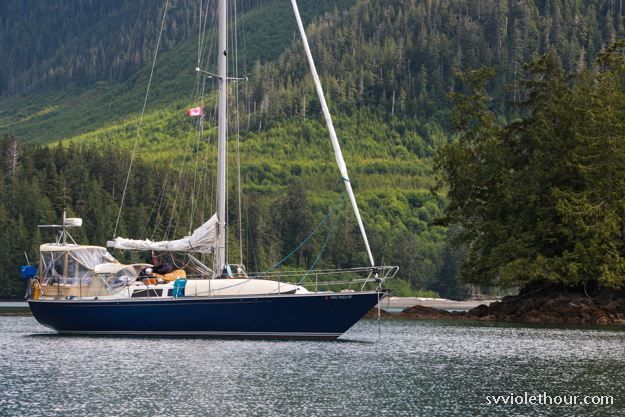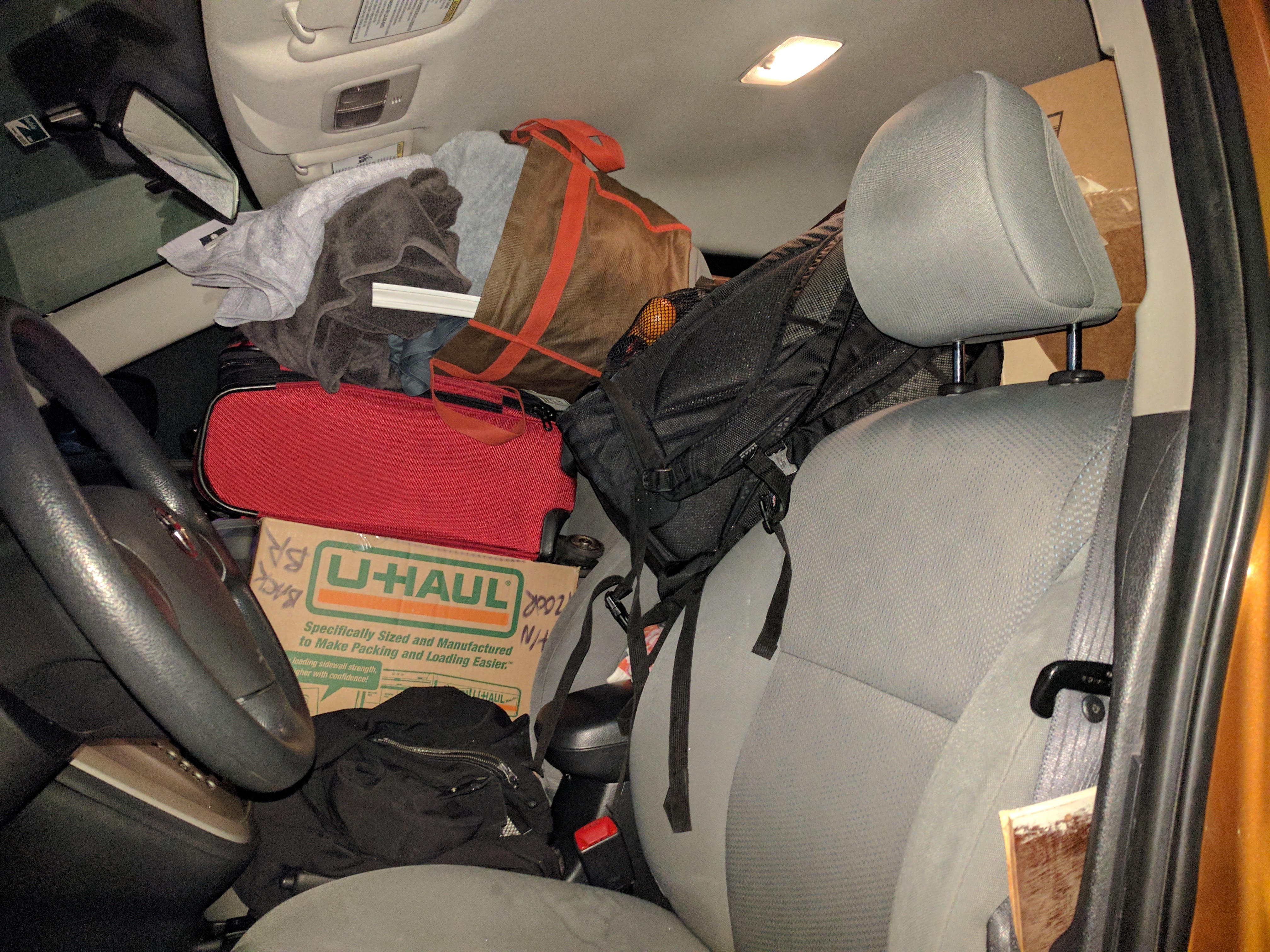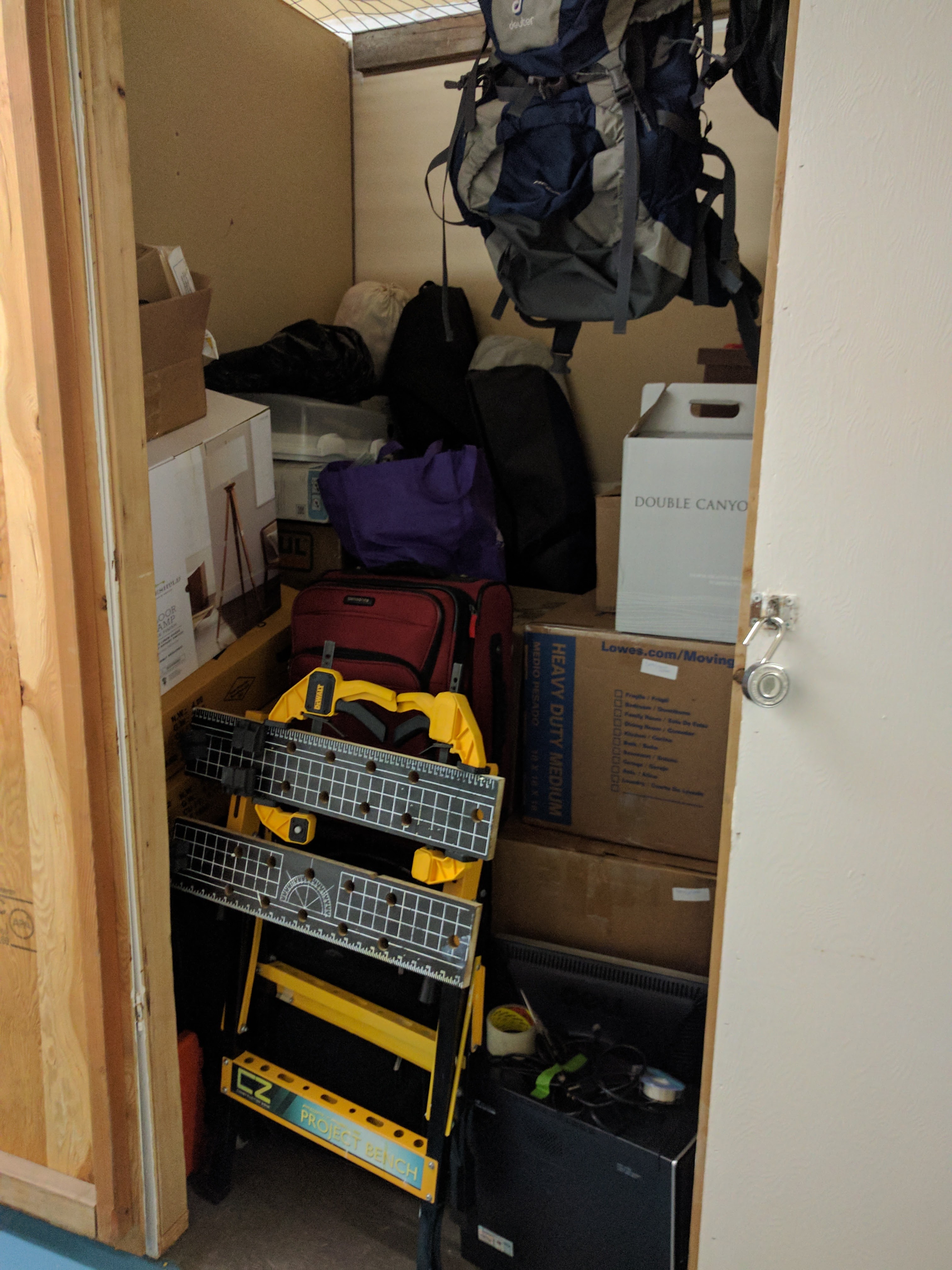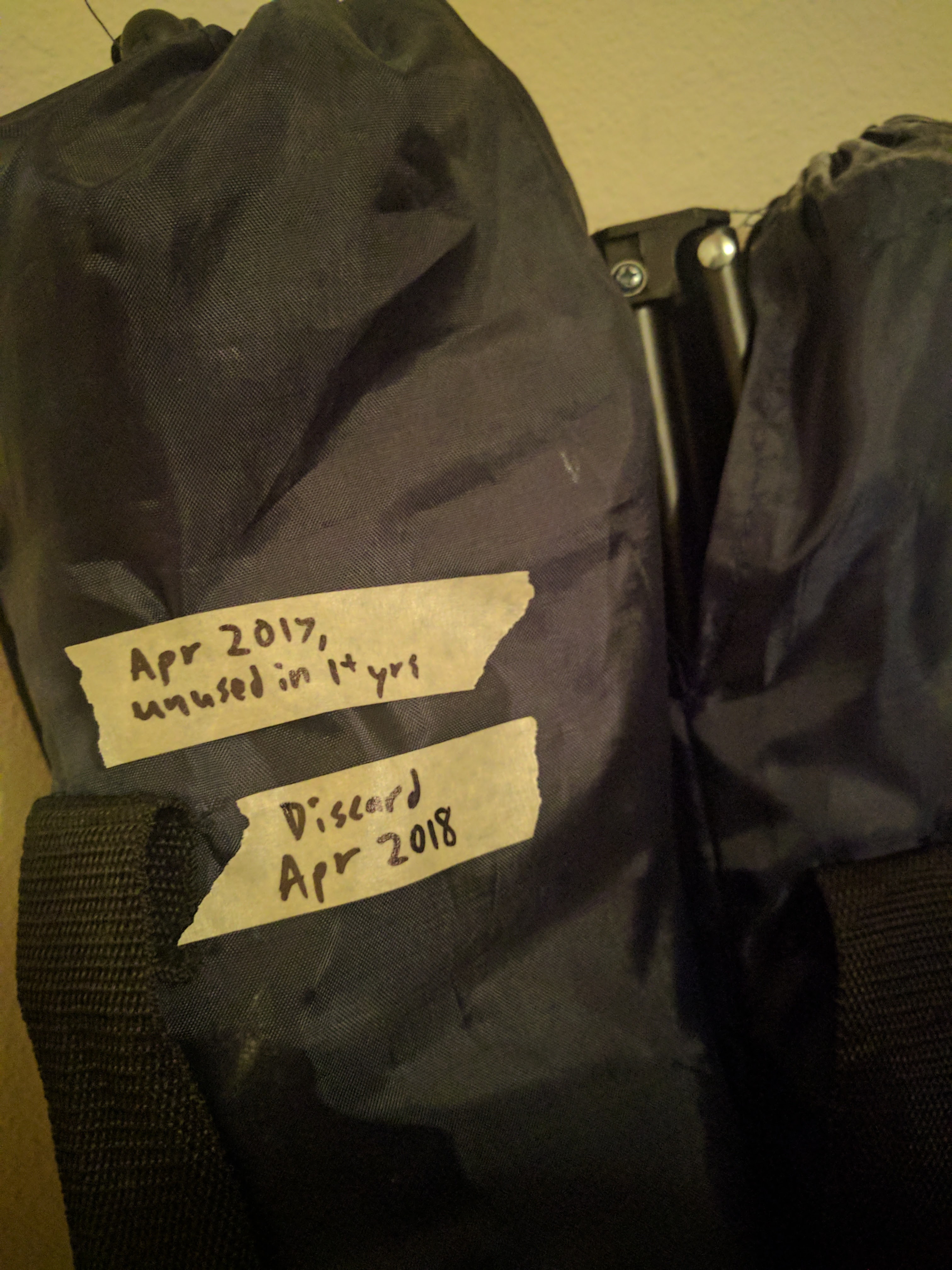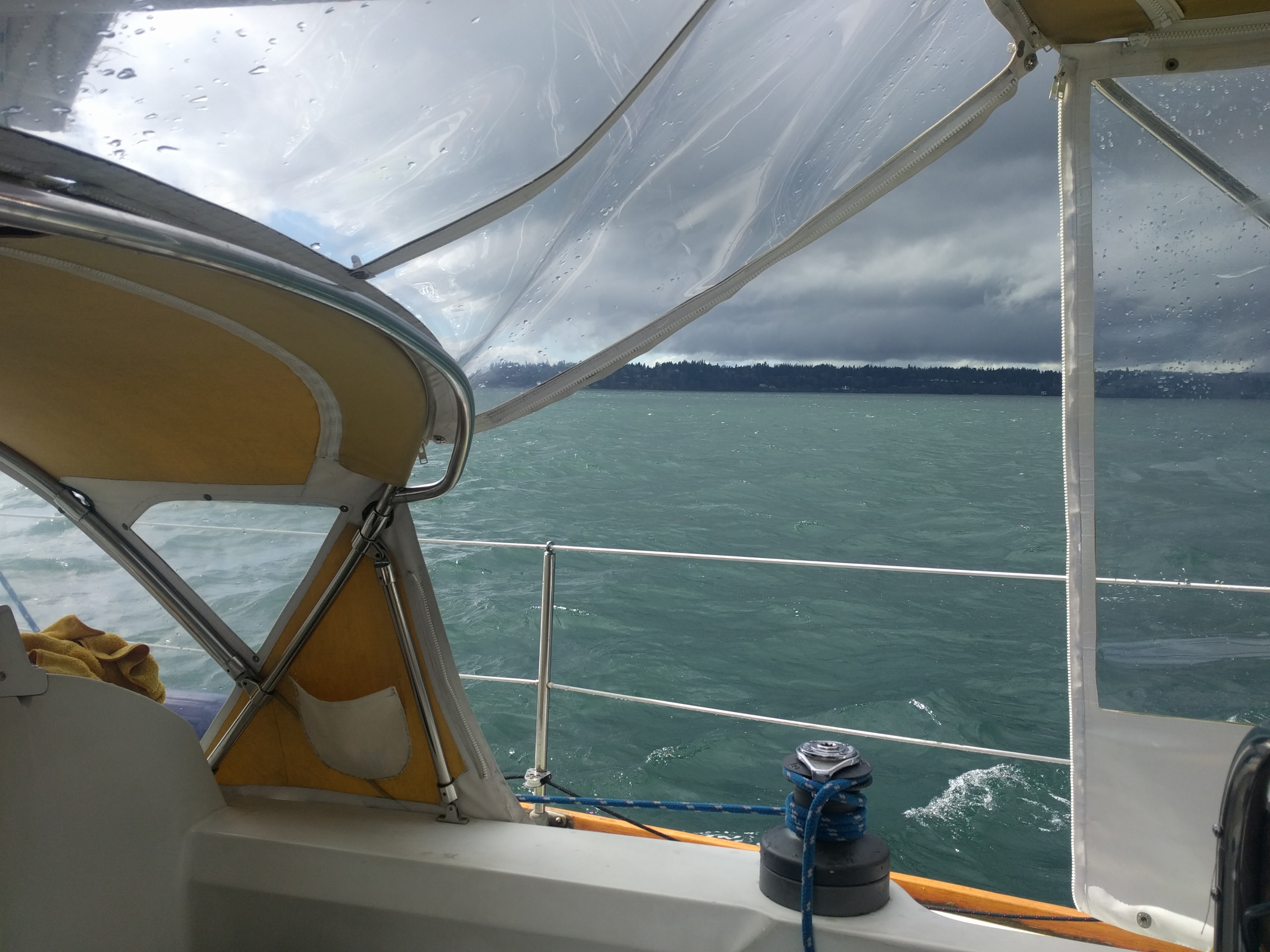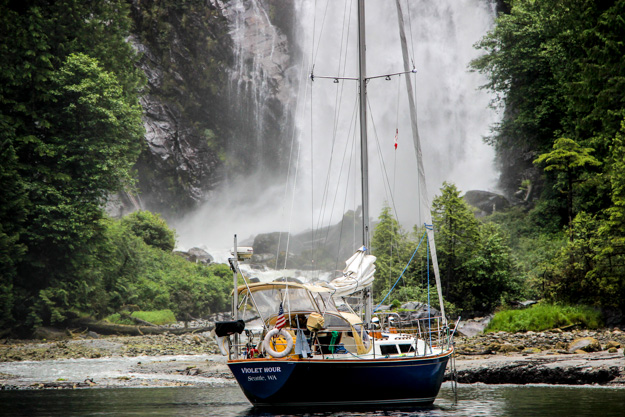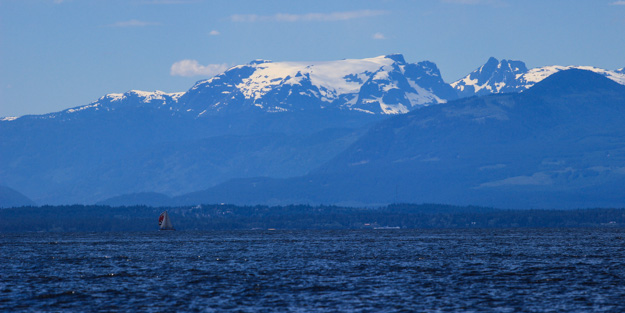For over a year now I’ve had the dream of sailing down to Mexico, cruising the Sea of Cortez for a while, then sailing out into the Pacific to Hawaii and then back to Seattle. Living the adventure everyone talks about.
It was an ambitious goal, born from a desire for freedom, adventure, and breaking out of the standard pattern of life – one of working oneself into the grave. We work and work all our life, and for what? To buy a bigger house and fill it with more possessions that we hardly ever use? To have more money in retirement to spend in the bingo hall?
World cruising had all the attributes of the perfect escape from normalcy – adventure, vagabonding on the cheap, and a connection with a simpler natural world where burying your nose in your phone as you walk around isn’t the norm.
I read all the cruising books. “The Voyager’s Handbook“ by Beth Leonard was my bible. Capn Fatty Goodlander, and Joshua Slocum’s “Sailing Around the World Alone”. Larry and Lin Pardey’s “Storm Tactics.” All of these books made cruising sound simply awesome! Sailing seemed like the perfect way to travel the world – cheaper than a hotel room, and you get to bring your stuff with you too (rather than just what you can fit in a backpack).
More Adventure Than We Really Needed
I thought ocean sailing would be an adventure – big long rolling waves, steady consistent winds, beautiful ocean expanses, and peaceful nights under a blanket of stars. That’s not what I found. During our 2 weeks on the west coast of Vancouver Island we had two days of zero wind in the Strait of Juan de Fuca, requiring many hours of motoring, short and steep cross waves off the coast of Van Isle, and winds that were anything but consistent (lasting usually just 1pm – 6pm, and either not enough – less than 5 knots – or a bit too much – greater than 25 knots).
The ocean for most of 2 weeks was a somber gray expanse, with gray featureless clouds right down to the horizon, looking exactly the same in almost every direction. The star filled nights I had hoped for were missing 12 days out of 14, since cloud cover usually blocked out the sky.
And sailing long distances was exhausting – even just 25 miles left us dead tired and spent for the day. We hand steered most of the time because the wheel autopilot isn’t strong enough to handle 5 foot waves coming from all different directions – a wave from the port quarter would push us starboard followed by a wave from starboard later pushing us to port, requiring strong, quick ¼ turns of the wheel to keep us on course.
Yes, it’s true we were really still doing coastal sailing – coastal sailing that just happened to be in the ocean, but not true ocean sailing with no land in sight. And the land – with its shallows, points and currents – was what caused the cross waves and wind changes oftentimes. And the fields of crab pots to dodge.
But I realized the ocean 100 miles offshore wouldn’t be any easier. And the mechanical problems we had this trip (When You Motor Can’t Go Forward, Drive in Reverse, Engine Problems in the Strait of Juan de Fuca) made me realize how quickly it could get miserable if the engine failed ten days out from shore.
The saying goes amongst cruisers that cruising is “fixing your boat in exotic places.” But this started to sound like a mere coping mechanism for a sucky situation – I didn’t want to be fixing the boat in exotic places. I’d much rather be fixing it at home, safely on dock and within access of Internet references. Replacing fuel filters and bleeding the engine at anchor in Neah Bay was not fun, and it’s quite a stretch to even begin to consider Neah Bay an exotic location.
I began to think long distance cruisers just have really bad memories – they forget the bad parts so quickly that they’ve erased the trials and tribulations of offshore voyaging by the time they’re due to do it again.
“Cruising Sailboats are Like Really Slow Motorboats”
But the #1 reason I realized long distance sailing might not be for me was due to how often it actually consisted of motoring!
Motoring a sailboat really kills me – call me a traditionalist, but motoring a sailboat makes me imagine the boat crying tiny tears of sorrow into the ocean. Sailboats are beautiful, amazing works of engineering, and it’s truly a privilege to own one. Burning diesel is not what sailboats were meant to do.
We’re not ones to shy away from sailing in light wind. We’re good at trimming for light air, have a boat that sails well in light air, and often we’ll be sailing in 5 knots of wind while most of the other sailboats around us are motoring someplace. But at the same time we’re not impractical motor-hating tyrants – we aren’t going to sail 4 hours at 1 knot. Covering 4 miles in half a normal work day is just really frustrating.
Cruising long distances pretty much requires motoring long distances. I thought the ocean would have at least some wind most of the time, or at least in the afternoon. But that’s not the case. We motored for 8 hours between Bamfield and Port Renfrew, crossing the western Strait of Juan de Fuca around 2pm over glassy calm waters. Neah Bay buoy was reading 2 kts I believe. We motored out the Strait of Juan de Fuca for two days as well, with no wind for most of each day. The 2nd day we had enough wind in only the last hour (4-5pm) to sail into Ucluelet.
This is not just a Northwest phenomenon. A survey of other cruisers in the Puget Sound Cruising Club who had cruised around the Pacific Ocean said they motored 50 to 85% of the time (it varied between couples). Motoring for over 24 hours is not uncommon.
A Model for Actually Sailing
The one beacon of hope I saw in this disappointing awakening was the realization that you don’t have to be a motoring sailor. Who decided you had to go 50 miles today? You did. When you decided to make a passage that has no safe anchorages for 50 miles. Or when you decided to run ahead of a storm. We get to choose whether we are motoring sailors or sailing sailors.
And the best way to avoid having your sailboat be a slow motorboat is to keep your passages short – really short, like 20 miles. That way if the day has 8 kts wind from 2-4pm and calm wind the rest of the day, you can wait for the wind and do some light air sailing and get to your destination in 3 or 4 hours. If you were trying to cover 50 miles with no motoring, 2 hours of 8 kt wind simply wouldn’t do it.
And this is the sad, roundabout way I came to the conclusion that the best way to avoid my #1 problem with long distance cruising was to not do long distance cruising.
What Now?
It’s heartbreaking having to dismantle a dream. Especially a dream you’ve spent years building up in your mind. It took years to build up and mere days to realize it might not really be what I want.
Deciding not to cross oceans feels like a defeat. Like I’m wimping out because it’s scary. The truth is it is scary, but also not as fun as the books I read made it sound. When people write books about cruising they don’t write in detail about all the bad parts or boring parts. That’s not what sells books. Cruising bloggers don’t usually write about the long boring passages they had motoring either. They just show the amazing photos of fish swimming in coral reefs from when they got there.
Now I’m learning to read between the lines. Laura Dekker’s book is one of the more honest ones I’ve read. She mentions the times she was becalmed, sometimes for days at a time, the hours spent motoring with one of the two diesel engines onboard, the big waves and cross waves that tossed her boat around making life rather uncomfortable, and the birds that turned the boat into a carpet of bird poop.
The Upside
A couple months ago if I read someone else writing the very words I’m writing now, I’d be silently judging and thinking of all the reasons they couldn’t hack it because they weren’t prepared enough, or experienced enough. Now I realize if you haven’t been in the ocean you really have no idea of knowing whether you’d like it or not. I can still change my mind. Maybe I could go offshore, and could prepare the boat for it – but maybe I don’t want to.
I do know it’s very easy to feel brave when sitting at a computer in the safety and comfort of home reading CruisersForum. It’s entirely different actually being out there in a tough situation, alone and cut off from any outside assistance.
But at least I have clarity now – I like cruising sounds, not oceans. Comfortable sailing on relatively smooth water in 10 – 25 knots of wind, with great anchorages every 10 to 20 miles so we can sail all afternoon without motoring and then drop the anchor for happy hour beers and snacks.
There’s plenty of fun to be had in Puget Sound and the Inner Passage, and more than enough adventure to last a while.

